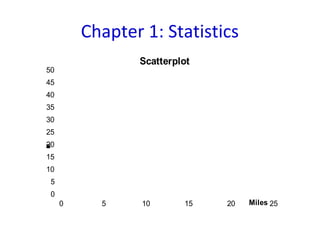This document provides an overview of key concepts in introductory statistics. It defines important terms like population, sample, variable, data, parameter, and statistic. It distinguishes between descriptive and inferential statistics, and qualitative and quantitative variables. It also discusses methods of data collection like experiments, surveys, sampling, and different sampling techniques. It emphasizes that variability is inherent in any data and measuring variability is important. It introduces basic statistical measures and the role of technology in statistics.





























